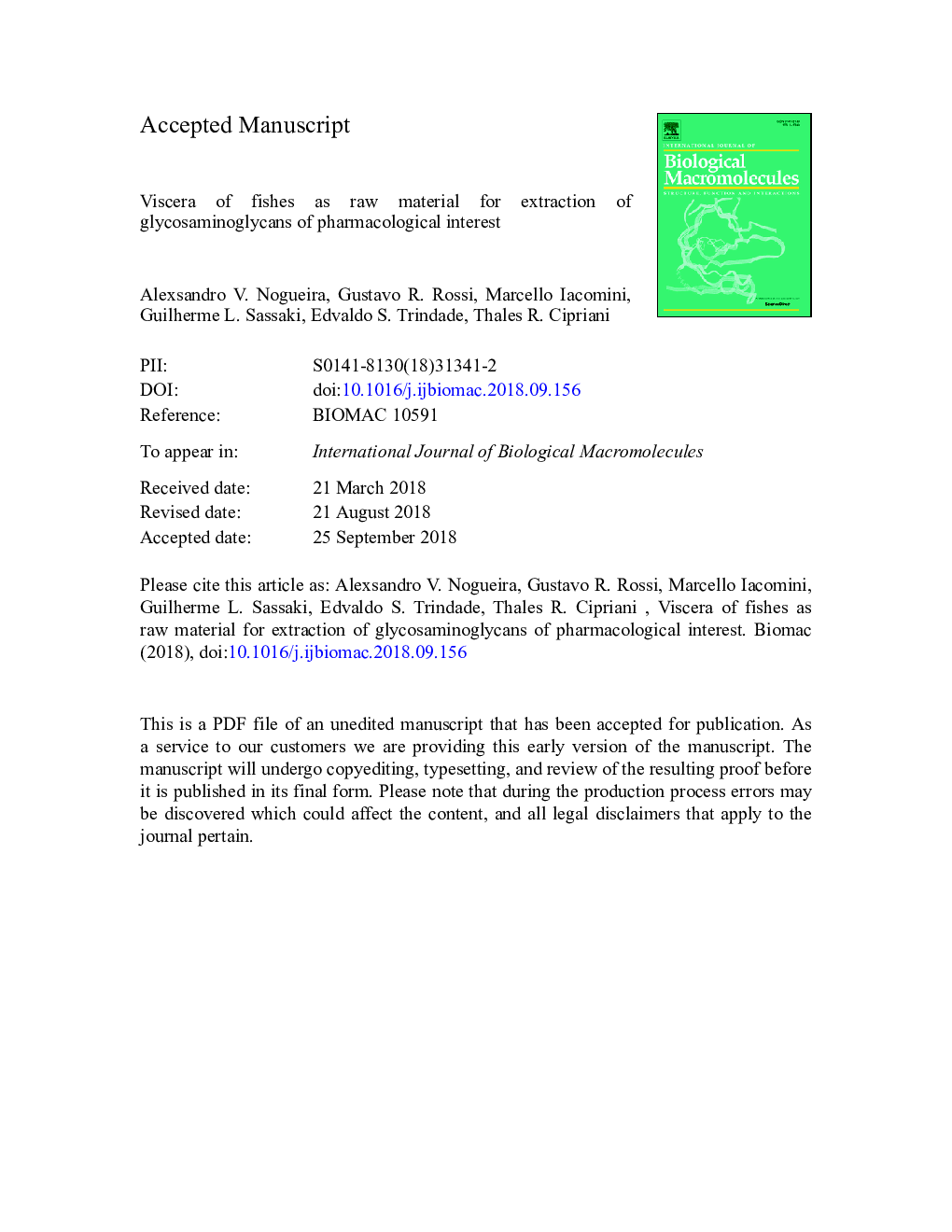| Article ID | Journal | Published Year | Pages | File Type |
|---|---|---|---|---|
| 11010966 | International Journal of Biological Macromolecules | 2019 | 29 Pages |
Abstract
World fisheries and aquaculture production totaled 167â¯millionâ¯tons in 2014. This high fish production generates a lot of waste that could be used as raw material for extraction of substances of pharmacological interest. In this work, we extract and characterize glycosaminoglycans (GAGs) present in the viscera of Nile tilapia (Oreochromis niloticus) and Pacu (Piaractus mesopotamicus), which are among the most vastly produced fishes in inland aquaculture in Brazil. Moreover, the anticoagulant activity of the GAGs fractions was evaluated. GAGs were obtained from total defatted viscera, after proteolysis, precipitation with ethanol, anion exchange chromatography and treatment with chondroitinase. Chondroitin sulfate (CS), dermatan sulfate (DS) and heparan sulfate (HS) were identified by agarose gel electrophoresis and NMR analyses. CS, DS and HS were identified in equivalent fractions obtained from both fishes, and all GAGs fractions showed anticoagulant activity.
Related Topics
Life Sciences
Biochemistry, Genetics and Molecular Biology
Biochemistry
Authors
Alexsandro V. Nogueira, Gustavo R. Rossi, Marcello Iacomini, Guilherme L. Sassaki, Edvaldo S. Trindade, Thales R. Cipriani,
